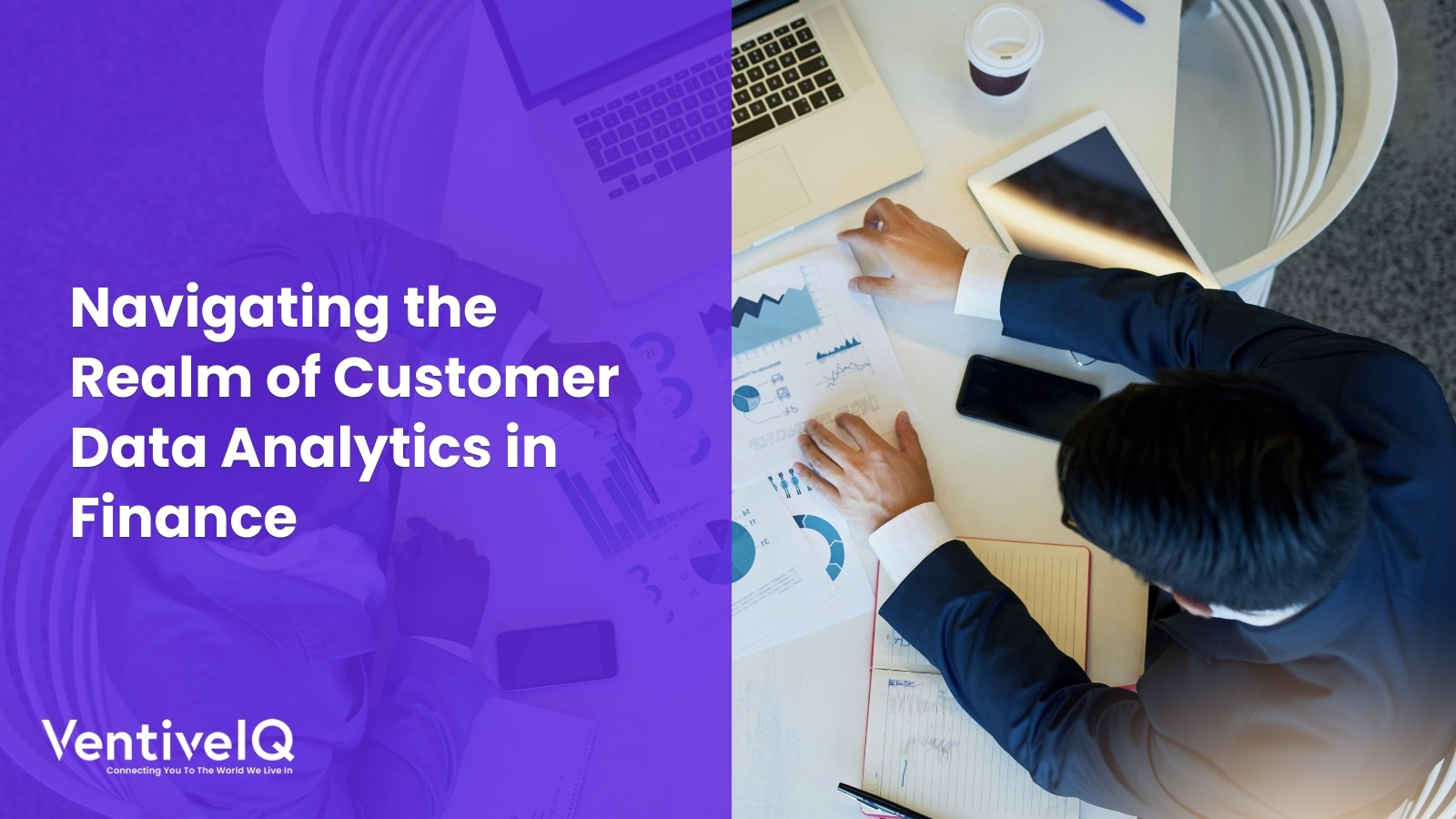In today’s data-driven world, businesses of all sizes are looking for ways to leverage data to make better decisions. One of the most important steps in this process is choosing the right data analytics tools.

There are a wide variety of data analytics tools available on the market, each with its own strengths and weaknesses. So how do you choose the right one for your business? Here are a few tips to help you get started:
1. Identify Your Data Analytics Needs
- Before diving into the vast array of data analytics tools, it is essential to assess your specific requirements.
- Start by identifying the key challenges and goals your organization aims to address through data analytics.
- Are you looking for descriptive analytics, predictive modeling, or advanced prescriptive analytics? Define the scope and scale of your data analytics projects, including the size and complexity of the datasets involved.
- Understanding your needs will help you narrow down the tools that align with your goals and deliver the desired outcomes.
2. Consider Data Sources and Integration
- Data analytics often involves working with diverse data sources, including structured and unstructured data from various systems.
- Consider the compatibility of the tools with your existing data infrastructure, including databases, data warehouses, and cloud platforms.
- Ensure that the analytics tools can seamlessly integrate with your data sources, allowing for efficient data extraction, transformation, and loading (ETL) processes.
- Compatibility with popular data formats and APIs can also facilitate smooth data integration and streamline the analytics workflow.
Read more: Unleash the Power of Information to know How to Use Data to Make Better Decisions.
3. Evaluate Scalability and Performance
- Scalability and performance are critical factors to consider, particularly when dealing with large volumes of data.
- Assess the tools’ capabilities to handle increasing data volumes without compromising performance.
- Look for tools that can scale horizontally, leveraging distributed computing or cloud-based architectures. Consider the processing speed and the ability to handle real-time or near-real-time analytics if time-sensitive insights are crucial for your business.
- Performance benchmarks, such as response times and throughput rates, can help you compare different tools and choose the one that best suits your scalability requirements.

4. Assess Analytical Capabilities
- The analytical capabilities of data analytics tools significantly impact the insights you can derive from your data.
- Evaluate the tools’ ability to perform descriptive, diagnostic, predictive, and prescriptive analytics based on your business needs.
- Descriptive analytics tools can help summarize and visualize data, while diagnostic analytics tools enable root cause analysis.
- Predictive analytics tools employ statistical modeling and machine learning algorithms to forecast future outcomes.
- Prescriptive analytics tools go a step further by providing recommendations and optimizing decision-making processes.
- Prioritize tools that offer a broad range of analytical techniques, including data exploration, data mining, and advanced machine learning algorithms.
5. Consider User Interface and Ease of Use
- Usability is a vital aspect when selecting data analytics tools, as they should be accessible to both technical and non-technical users.
- Evaluate the user interface (UI) and user experience (UX) of the tools to ensure they are intuitive and require minimal training.
- Look for features such as drag-and-drop functionalities, visual data exploration capabilities, and interactive dashboards.
- Additionally, consider the availability of self-service analytics capabilities that empower business users to explore data and generate insights without heavy reliance on data scientists or IT specialists.
Learn more about Harnessing the Power of Data Science for Enhanced Advertising Effectiveness
6. Research Vendor Support and Community
- Before finalizing your decision, research the vendor’s reputation and support services. Evaluate the vendor’s track record, customer reviews, and testimonials.
- Consider factors such as the vendor’s responsiveness to customer queries, availability of technical support, and the frequency of software updates.
- A vibrant user community, online forums, and active user groups can also be beneficial for knowledge sharing, troubleshooting, and staying updated with the latest trends in data analytics.
- Once you’ve considered all of these factors, you’ll be in a good position to choose the right data analytics tools for your business.

Here are some additional tips to help you choose the right data analytics tools:
- Consider your data sources. What data do you need to analyze? Where is the data stored? The data analytics tools you choose should be able to connect to your data sources and load the data quickly and easily.
- Think about your long-term needs. As your business grows, your data analytics needs will likely change. Make sure to choose a tool that can grow your business.
- Consider your security needs. Your data is valuable, so you need to make sure that it’s secure. Choose a data analytics tool that offers strong security features.
Choosing the right data analytics tools can be a daunting task, but it’s an important one. By following these tips from VentiveIQ data experts, you can find the tools that will help you make the most of your data and achieve your business goals.
8 Most popular data analytics tools
In the USA, several data analytics tools have gained popularity among businesses for their robust features, user-friendly interfaces, and extensive capabilities. Here are some of the 8 most popular data analytics tools used by businesses:

- Microsoft Power BI: Microsoft Power BI is a business intelligence (BI) platform that helps businesses to analyze data and make better decisions. It is a powerful tool that offers a wide range of features, including data visualization, reporting, and dashboarding.
- Tableau: Tableau is another popular BI tool that is known for its easy-to-use interface and powerful data visualization capabilities. Tableau is a great choice for businesses that want to create interactive dashboards and reports that can be shared with others.
- Qlik Sense: Qlik Sense is a data analytics tool that is known for its speed and scalability. Qlik Sense is a good choice for businesses that need to analyze large amounts of data quickly.
- Domo: Domo is a cloud-based BI tool that is known for its ease of use and integration with other cloud-based applications. Domo is a good choice for businesses that want to get started with data analytics quickly and easily.
- Zoho Analytics: Zoho Analytics is a cloud-based BI tool that is known for its affordability and flexibility. Zoho Analytics is a good choice for businesses that are on a budget or that need a BI tool that can be customized to their specific needs.
- Google Data Studio: Google Data Studio is a free BI tool that is known for its ease of use and integration with Google Cloud Platform (GCP) services. Google Data Studio is a good choice for businesses that are already using GCP services or that want a free BI tool.
- SAS Enterprise Guide: SAS Enterprise Guide is a powerful BI tool that is known for its scalability and advanced analytics capabilities. SAS Enterprise Guide is a good choice for businesses that need to analyze large amounts of data or that need to use advanced analytics techniques.
- RStudio: RStudio is an open-source BI tool that is known for its flexibility and community support. RStudio is a good choice for businesses that want a BI tool that can be customized to their specific needs or that want to use the R programming language for data analysis.
Conclusion
Choosing the right data analytics tools is crucial for organizations seeking to unlock the full potential of their data. By identifying your specific needs, considering data integration, evaluating scalability and performance, assessing analytical capabilities, prioritizing usability, and researching vendor support, you can make an informed decision that aligns with your business goals.



